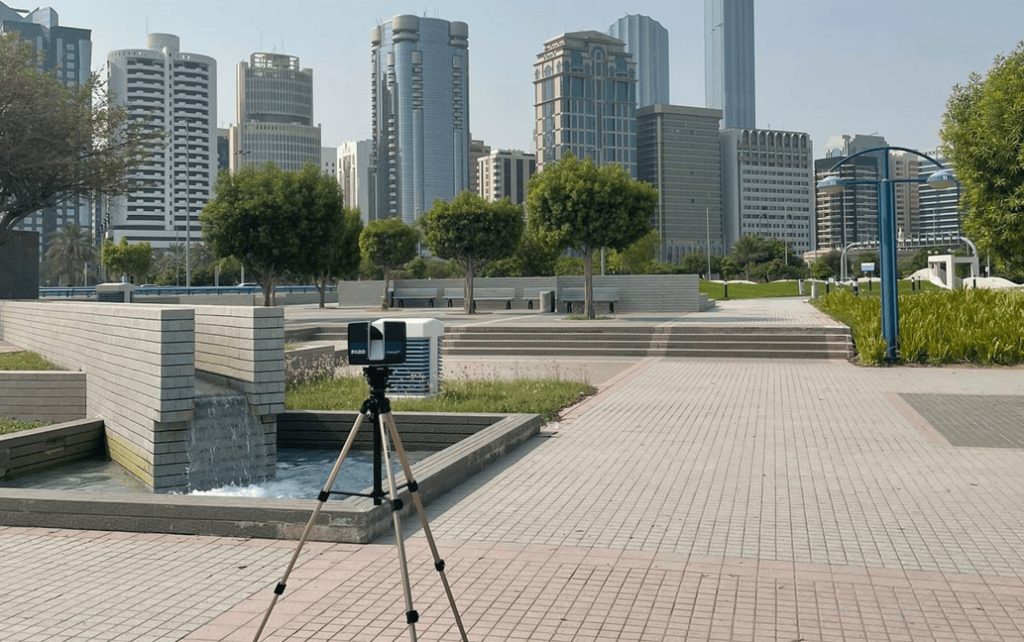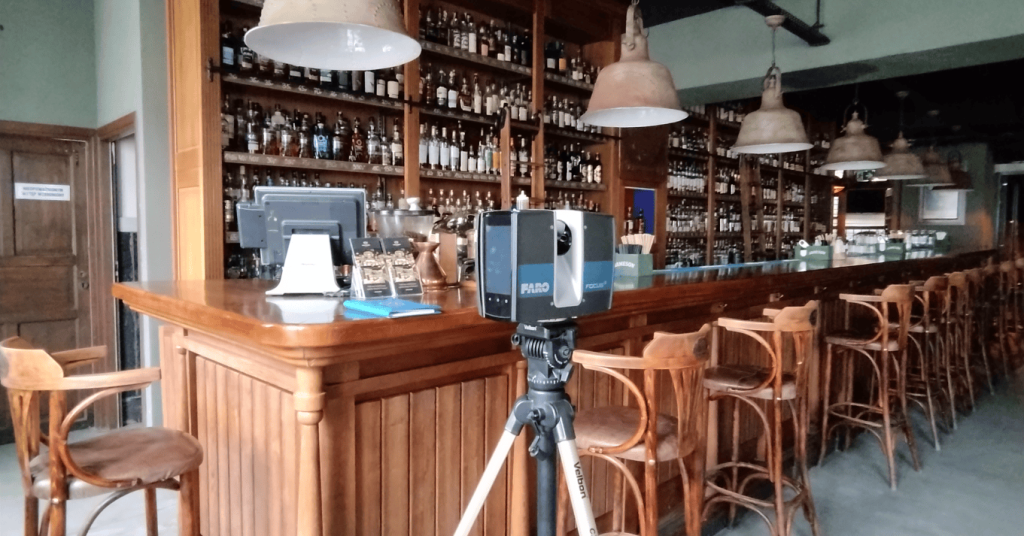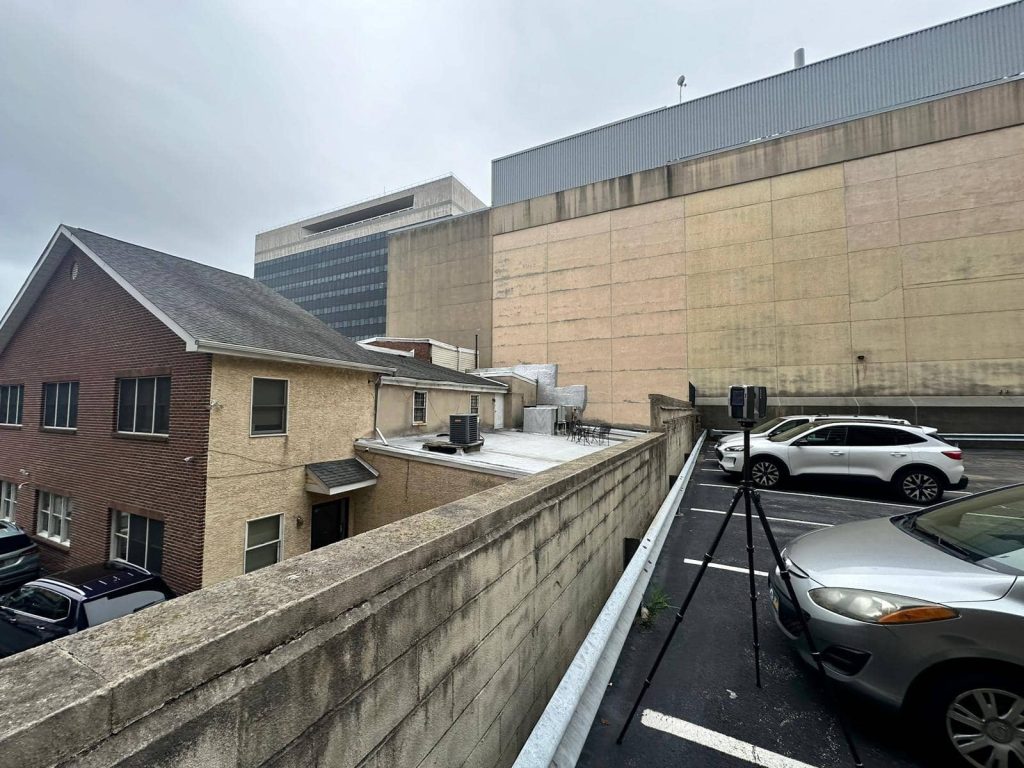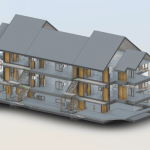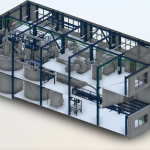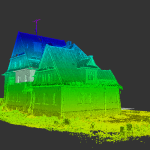Why You Don’t Need Expensive LiDAR Technology for High-Precision Laser 3D Scanning

Laser 3D scanning has revolutionized industries like construction, architecture, and engineering. As businesses explore this powerful technology, many are led to believe that LiDAR technology is the gold standard for 3D scanning. However, when it comes to precision, versatility, and cost efficiency, LiDAR often falls short of the expectations set by stationary laser scanners from brands like Faro, Leica, and Trimble. Companies like ScanM2 have embraced these more advanced laser technologies, demonstrating why you don’t need LiDAR technology to achieve the best results in 3D laser scanning.
What is LiDAR Technology?
LiDAR (Light Detection and Ranging) technology works by emitting laser pulses to map out distances and create 3D models of environments. While LiDAR has been heralded for its ability to capture large-scale topographical data, it is primarily designed for aerial applications, such as mapping landscapes or surveying large areas. This very capability, though impressive, limits its effectiveness in detailed, high-precision scanning needed for architecture, construction, and engineering projects.
How Stationary Laser 3D Scanners Surpass LiDAR
One of the most significant limitations of LiDAR scanners is their lower precision when compared to stationary laser scanners like those made by Faro, Leica, and Trimble. LiDAR scanners typically offer accuracy within a range of a few centimeters, which may suffice for topographic mapping but falls short for projects requiring finer details. For instance, when scanning buildings or mechanical systems, even a millimeter difference can have a substantial impact on the project’s outcome.
In contrast, the laser scanners used by ScanM2 deliver precision down to 1-5 millimeters, ensuring that even the smallest details are captured accurately. This level of precision is crucial when creating as-built models, 2D documentation, or point clouds for projects where precision defines success. LiDAR technology, while useful in certain contexts, simply cannot compete with the accuracy and detail provided by these stationary scanners.
Why Every Millimeter Matters in 3D Scanning
Precision is not a luxury in 3D scanning; it’s a necessity. Whether you’re renovating a small apartment or designing an industrial complex, even the tiniest details can significantly impact the project’s success. Stationary 3D scanners from Faro, Leica, and Trimble allow professionals to capture an incredible level of detail—down to fractions of a millimeter. This makes them perfect for both large-scale developments and intricate restoration projects, where precision and detail are essential.
LiDAR scanners, on the other hand, often struggle to deliver this same degree of resolution. While they excel in capturing large areas, their lower resolution makes them unsuitable for tasks where high-fidelity data is required. Choosing a stationary laser scanner over LiDAR technology ensures that every project, no matter how small, benefits from unmatched detail.
Cost Efficiency: High-End Equipment Without the High Price
In addition to providing superior precision, stationary laser scanners are also more cost-effective compared to LiDAR technology. The common misconception that LiDAR scanners are the best option leads some to pay a premium for 3D scanning services. However, ScanM2 proves that you don’t need to spend a fortune to get high-end scans.
Our company offers competitive pricing for both large-scale and small-scale projects, thanks to the efficiency and accuracy of the Faro, Leica, and Trimble scanners we use. While other companies charge exorbitant fees for scans with less advanced equipment, ScanM2 provides better results at a fraction of the price.
Maximizing Value for Design and Architecture Firms
For architectural firms and designers, the ability to obtain accurate scans quickly and affordably is a game-changer. ScanM2’s services allow firms to outsource their 3D scanning needs, saving money on hiring full-time staff and investing in expensive equipment. Additionally, the point cloud data and as-built models we provide can easily integrate into BIM software, streamlining the process for both designers and engineers.
Applications of 3D Laser Scanning for Various Projects
3D laser scanning offers versatility, making it suitable for an extensive variety of projects. Whether you’re scanning an entire factory or just a single room, Faro, Leica, and Trimble scanners can adapt to any setting.
Scanning for Large Industrial Sites
One of the key advantages of stationary laser scanners is their ability to handle vast industrial spaces with ease. These devices capture millions of points per second, allowing for the creation of detailed models of large areas, such as factories, warehouses, or manufacturing plants. This high level of detail allows for more precise planning, construction, and ongoing maintenance of industrial facilities.
Residential Projects: From Apartments to Full Redesigns
At the same time, 3D scanning services can be just as beneficial for smaller projects like residential properties. Faro and Trimble scanners are nimble enough to scan a single room or an entire apartment complex, providing detailed data that architects and interior designers can use to create accurate blueprints or redesign layouts.
In contrast, LiDAR technology, with its focus on large-scale outdoor environments, is ill-suited for these more intimate, precise indoor applications.
Preserving Historical Monuments: High-Precision Scanning for Restorations
One area where 3D laser scanning truly excels is in preserving historical sites. The high level of detail provided by stationary scanners allows for the careful documentation of ancient architecture, sculptures, and monuments, ensuring that restorations remain faithful to the original design. ScanM2’s scanning services offer the precision necessary for these delicate restoration efforts, which often demand an extraordinary attention to detail.
Our 3D Scanning Process & Results
How 3D Scanning Enhances As-Built Services
As-built services play a vital role in any construction project, ensuring that the final build accurately reflects the original design. With the help of 3D scanning, architects and engineers can accurately capture the existing state of a building or infrastructure, providing a solid foundation for any future modifications or renovations.
Built Information Modeling (BIM) and the Role of 3D Scanning
A key reason companies depend on 3D laser scanning is to enhance and streamline their BIM workflows. Built Information Modeling requires accurate point cloud data to create realistic models of structures, which is only possible with high-precision scanning. ScanM2’s scanners provide the level of detail necessary to produce BIM models that reflect the true state of a building, ensuring that every aspect of the project, from planning to execution, aligns perfectly.
From Scans to 2D Documentation: The Power of Accurate Point Clouds
Once a structure is scanned, the data can be transformed into 2D documentation, such as floor plans and elevation drawings. This is invaluable for architects, engineers, and designers who need accurate measurements to plan renovations or new builds. The point clouds generated by ScanM2’s scanners are highly detailed, ensuring that the resulting documentation is as accurate as possible.
Why Choose ScanM2’s 3D Scanning Services?
When considering 3D scanning services, the choice of equipment and expertise matters. ScanM2 is proud to use the most advanced stationary laser scanners available, offering superior precision, flexibility, and cost-efficiency compared to LiDAR technology. Whether you’re working on a large-scale industrial project or a small residential redesign, our team has the expertise to meet your needs—at a price that won’t break your budget.
FAQs
What is 3D laser scanning?
3D laser scanning utilizes laser beams to capture accurate measurements of a space or object, generating a highly detailed 3D model.
How does 3D scanning differ from LiDAR technology?
While both technologies use lasers, 3D laser scanning offers higher precision and is better suited for projects requiring detailed, close-range scans, unlike LiDAR, which is best for large-scale outdoor mapping.
Why is the level of detail important in 3D scanning?
Precision is essential in projects like construction and design, where even small inaccuracies can lead to costly mistakes.
Can 3D scanning be used for small-scale projects?
Yes, 3D laser scanning is versatile enough to be used for both large and small projects, from scanning entire factories to individual apartments.
How accurate is 3D laser scanning?
With equipment like Faro, Leica, and Trimble scanners, the accuracy ranges from 1 to 5 millimeters, providing an unparalleled level of detail.
How does 3D scanning benefit as-built services?
3D scanning provides accurate data that helps architects and engineers verify that a building matches the design, ensuring smooth project completion.
Conclusion
While LiDAR technology may be suitable for large-scale outdoor mapping, it falls short in the precision and versatility needed for most construction, design, and engineering projects. ScanM2’s 3D scanning services leverage the best stationary laser scanners to provide the highest level of detail at a competitive price. From large industrial sites to small residential projects, we offer the accuracy and cost-efficiency that LiDAR simply can’t match.






















